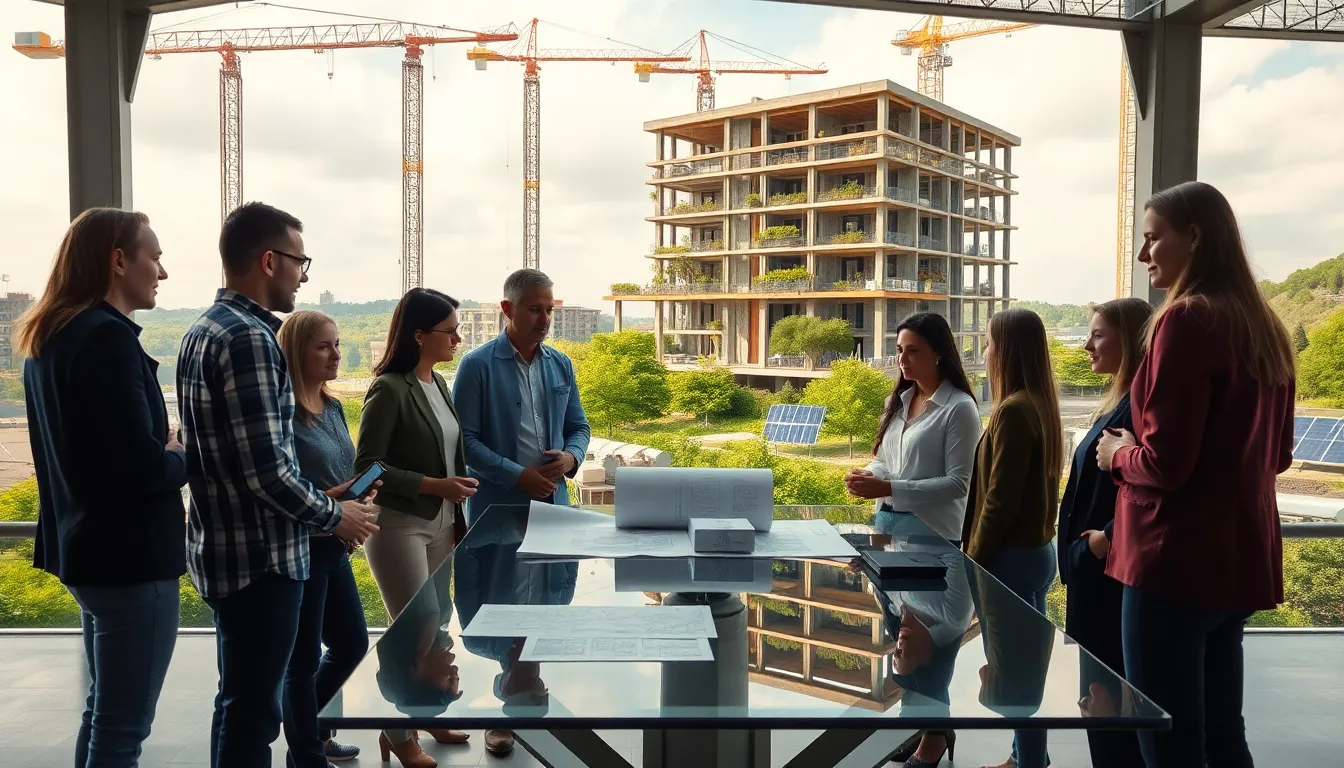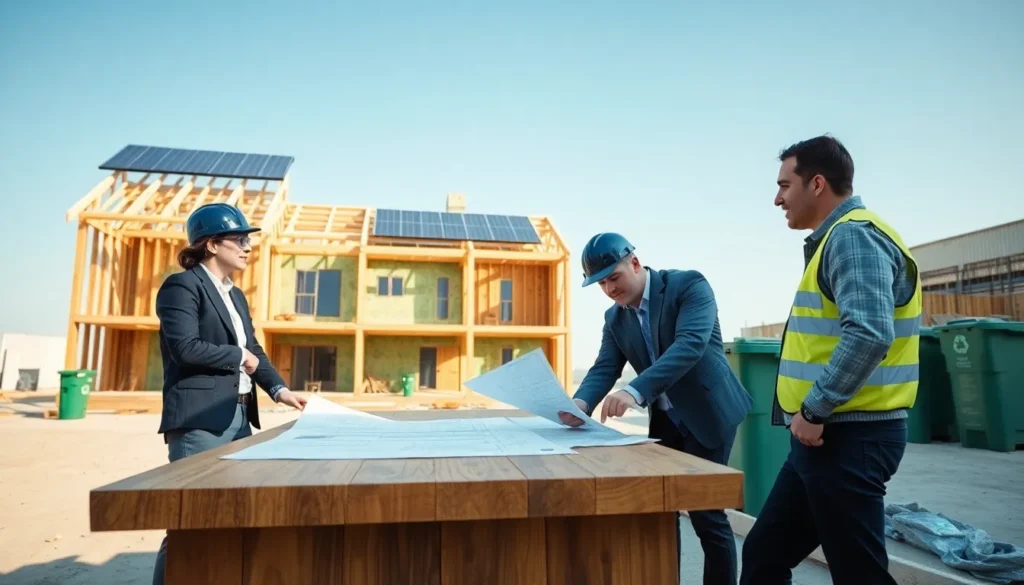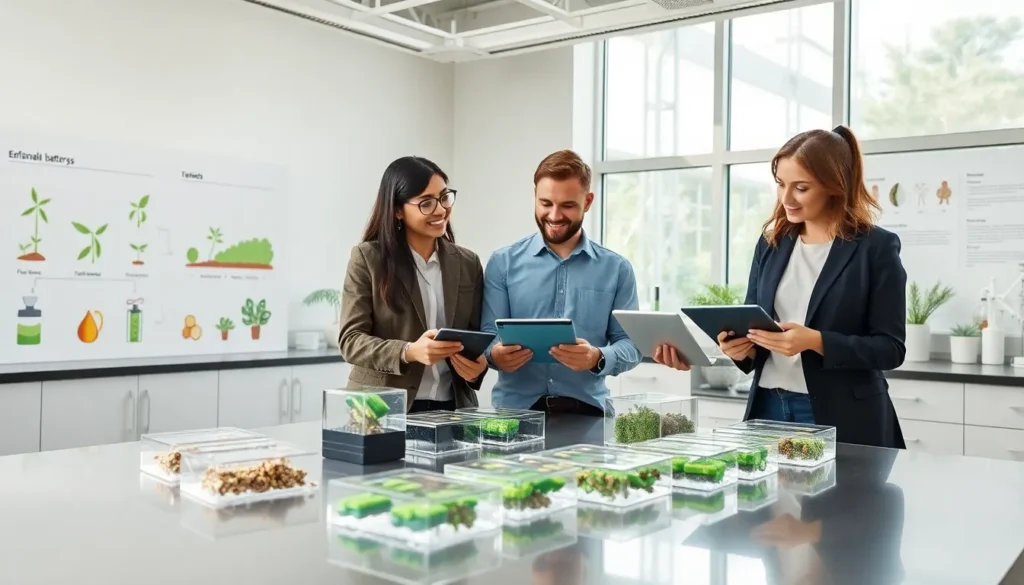Table of Contents
ToggleEver wondered what it takes to make construction a bit more Earth-friendly? Sustainable construction technology is here to sweep your worries away, like a well-placed construction site broom. It’s not just a buzzword, but a vital shift in how buildings are designed and erected. Think about it: we’re not just erecting walls but crafting homes, offices, and entire structures that promise longevity and harmony with the environment. Get ready to jump into the exciting world where eco-friendly practices and cutting-edge technologies collide.
Understanding Sustainable Construction

Sustainable construction refers to a method of building that reduces environmental impact while optimizing resource use. The goal is to create a structure that not only meets the needs of today but also preserves the environment for future generations. By integrating eco-friendly practices from planning through demolition, sustainable construction aims to minimize waste, enhance energy efficiency, and lower carbon emissions. This approach encompasses everything from site selection to construction materials, promoting a holistic understanding of how buildings interact with their surroundings.
The Importance of Sustainability in Construction
Why consider sustainability in construction? The answer lies in the growing awareness of climate change and resource depletion. Construction activities account for a significant portion of global greenhouse gas emissions and waste. By adopting sustainable practices, the industry can mitigate these effects and embrace a circular economy. Not only does sustainable construction provide long-term savings through energy efficiency and lower operational costs, but it also enhances the health and well-being of the occupants. Besides, sustainable buildings often attract more tenants and can increase property values, making them a smart choice for investors.
Innovative Sustainable Construction Technologies
The landscape of sustainable construction is ever-evolving. Innovative technologies are leading the charge in making building practices more environmentally sound.
Materials Used in Sustainable Construction
One of the key components of sustainable construction is the use of eco-friendly materials. These may include recycled steel, bamboo, and reclaimed wood. Such materials not only reduce the demand for virgin resources but also lower the carbon footprint of building processes. Also, green insulation materials like wool and cellulose are gaining traction, providing excellent thermal performance while minimizing environmental impact.
Energy-Efficient Building Techniques
Energy efficiency is another cornerstone. Techniques such as passive solar design can reduce reliance on heating and cooling systems, eventually lowering energy consumption. The integration of smart technologies, such as building automation systems, allows for real-time monitoring and optimization, ensuring that energy is used only when necessary. Besides, technologies like solar panels and green roofs are becoming more common, generating clean energy and enhancing building aesthetics.
Waste Management and Recycling Practices
Waste management practices are transforming as well. The adoption of on-site recycling and waste diversion strategies helps prevent materials from reaching landfills. By reusing concrete, metals, and other sturdy materials, projects can significantly cut down on waste while saving costs. Construction sites are increasingly focusing on waste audits to track and minimize what they dispose of, leading to smarter and more responsible building practices.
Challenges and Barriers to Sustainable Construction
Even though the numerous benefits, the transition to sustainable construction is not without its hurdles. One of the primary challenges is the higher upfront costs associated with many sustainable materials and technologies. This can deter developers and contractors who prioritize immediate returns over long-term savings. Also, a lack of awareness and training in sustainable practices can impede progress in the industry. Many construction professionals may not have the resources or knowledge required to carry out these technologies effectively. Regulation also plays a role: existing building codes often do not fully accommodate innovative sustainable solutions, creating red tape that can stifle creativity and progress.
Future Trends in Sustainable Construction Technology
Looking ahead, several trends are shaping the future of sustainable construction technology. One notable trend is the increased use of artificial intelligence and machine learning in project planning and resource management. These technologies can analyze data and optimize designs for energy efficiency and cost-effectiveness, promoting sustainability from the ground up. Besides, the rise of bio-construction, a method using living materials like mycelium, promises a revolutionary change in how buildings are constructed. As the demand for sustainable practices grows, so too does the potential for new innovations that continue to align construction with the principles of environmental stewardship.




